[ad_1]
Hip Hop, a cultural phenomenon that emerged from the colourful streets of the South Bronx within the Nineteen Seventies, has transcended its humble beginnings to change into a worldwide pressure influencing music, trend, and societal norms.
Rooted in creativity, self-expression, and resilience, Hip Hop isn’t merely a style of music; it’s a multifaceted cultural motion that has formed the identification of communities and people around the globe.
This text is kind of a “What’s Hop Hop Tradition Essay” and it delves into the essence of Hip Hop tradition, exploring its origins, key components, world affect, and its continued relevance in modern society.
What Is The Definition of Hip Hop Tradition?
So, what’s hip hop tradition in America and around the globe? At its core, Hip Hop is greater than only a style of music; it’s a holistic cultural expression that encompasses varied artwork types and social practices. It serves as a platform for marginalized voices to articulate their experiences, challenges, and aspirations.
Some typically ask what’s the objective of hip hop? The easy reply is that Hip hop believes that folks can take management of their lives by way of self-knowledge and self-expression.
Self expression permits one to really feel liberated although the expression of their ideas, emotions, concepts, and artwork. Self-knowledge can exude confidence and make one really feel worthy in a world stuffed with negativity and pessimism.
Hip Hop tradition consists of 4 main components, also known as the “4 Pillars of Hip Hop“: MCing (rapping), DJing (turntablism), Breaking (b-boying/b-girling), and Graffiti artwork. Every of those components contributes to the wealthy dynamics that outline the tradition.
.
Rapping (Mcing)
Rapping, a basic component of Hip Hop tradition, is a rhythmic and poetic vocal supply sometimes carried out over a musical backdrop, generally known as a beat or instrumental.
Additionally known as MCing (Grasp of Ceremonies) or emceeing, rapping includes using intricate rhymes, wordplay, and rhythmic patterns to convey a message or inform a narrative.
At its core, rapping is a type of self-expression, permitting artists to speak their ideas, experiences, and views.
The lyrical content material can vary from private narratives and social commentary to playful boasts and complex metaphors. Rappers typically use their verses to deal with societal points, share private struggles, or showcase their lyrical prowess.

Dj (Turntabilsm)
A hip hop DJ, also known as a “turntablist” or “Hip Hop DJ,” performs an important position within the dynamic world of Hip Hop tradition. Not like conventional DJs who primarily combine and mix music for dance flooring, a Rap DJ is instrumental within the creation and efficiency of Hip Hop music, contributing to the style’s distinctive sound and identification.
Key Duties of a Rap DJ:
- Beat Manufacturing: A Rap DJ isn’t just a selector of data however a creator of beats. They use turntables, mixers, and different gear to control vinyl data, samples, and loops, creating the distinctive beats that function the muse for rap songs.
- Scratching: Scratching is a signature method utilized by Rap DJs. It includes manipulating a vinyl document backwards and forwards on a turntable whereas utilizing a crossfader on a mixer to create rhythmic, percussive sounds. Scratching provides a dynamic and expressive component to the music.
- Sampling: Rap DJs are sometimes concerned within the artwork of sampling, taking snippets of sound from varied sources, together with different songs, speeches, or sound results, and incorporating them into the music. This sampling method is integral to the creation of distinctive and modern Hip Hop tracks.
- Stay Performances: Rap DJs play a central position in stay performances, collaborating with MCs (rappers) to create an electrifying stage presence. Their capability to seamlessly mix beats, scratch, and manipulate sounds in real-time enhances the general affect of a stay Hip Hop present.
- Collaboration with MCs: Rap DJs typically work intently with MCs to create a symbiotic relationship throughout performances. The DJ offers the musical backdrop for the rapper’s lyrics, contributing to the general synergy of the act.
- Innovation and Experimentation: The very best Rap DJs are identified for his or her innovation and experimentation. They always push the boundaries of what’s potential with turntables and different gear, contributing to the evolution of the Hip Hop sound.
Breaking (B-boying)
Breakdancing, also known as “b-boying” or “breaking,” is a dynamic and acrobatic type of avenue dance that originated throughout the Hip Hop tradition within the South Bronx, New York Metropolis, in the course of the Nineteen Seventies.
It is among the 4 basic components of Hip Hop, alongside MCing (rapping), DJing (turntablism), and graffiti artwork. Through the years, breakdancing has developed into a worldwide phenomenon, with devoted practitioners and competitions worldwide.
It has additionally influenced mainstream tradition, impacting music movies, motion pictures, and even components of well-liked dance types.
Breakdancing, or b-boying, continues to thrive as a vibrant and expressive artwork type, sustaining its roots in Hip Hop whereas evolving by way of the innovation and creativity of dancers around the globe.
Graffiti Artwork
Hip Hop graffiti artwork, is a visible type of expression that emerged as a distinguished component of the Hip Hop cultural motion that started within the 70’s. As talked about earlier than it is among the components that make up the hip hop tradition.
Graffiti includes the creation of inventive and sometimes intricate photos or lettering on public surfaces equivalent to partitions, buildings, and trains. Graffiti artwork is a robust technique of communication, showcasing the creativity, identification, and sociopolitical commentary of its creators. One of many largest pioneers of graffiti is Fab 5 Freddy.
The Starting Of Hip Hop Music
The roots of Hip Hop may be traced again to the South Bronx in New York Metropolis in the course of the tumultuous Nineteen Seventies. A backdrop of financial decline, social unrest, and restricted alternatives fueled the creativity of black marginalized youth.
On this difficult atmosphere, the foundational components of Hip Hop tradition started to take form. DJ Kool Herc, who’s a Jamaican-American, and is hailed because the “Father of Hip Hop,” performed a pivotal position in shaping the tradition by internet hosting block events the place he prolonged the instrumental breaks of songs, offering a rhythmic basis for MCs and dancers.
Within the Eighties, Hip Hop underwent a transformative section because it transitioned from its grassroots beginnings within the South Bronx to a cultural phenomenon that permeated mainstream consciousness.
This era witnessed the style’s growth past native block events and underground scenes, with artists breaking new floor and creating timeless contributions to the Hip Hop narrative.
One pivotal second throughout this period was the discharge of “Rapper’s Delight” by The Sugarhill Gang in 1979. The music marked the primary industrial success for rap music, introducing the world to the infectious rhymes and rhythmic beats that outlined the style. “Rapper’s Delight” not solely turned a chart-topping hit but additionally opened the doorways for Hip Hop to enter the mainstream music panorama.
.
Grandmaster Flash and the Livid 5 additional propelled Hip Hop into the limelight with their 1982 launch, “The Message.” This groundbreaking monitor addressed social points and concrete realities with a uncooked and unfiltered narrative.
“The Message” marked a departure from the party-centric themes of early Hip Hop, showcasing the style’s capability for social commentary and storytelling. The success of this single demonstrated that Hip Hop could possibly be a robust medium for expressing the struggles and challenges of marginalized communities.
Breakdancing, a basic component of Hip Hop tradition, started within the streets within the Nineteen Seventies however gained prominence within the Eighties. Movies like “Breakin‘” and “Beat Road” introduced breakdancing into mainstream visible tradition, charming audiences with the dynamic and acrobatic actions of b-boys and b-girls.
These movies not solely showcased the dance type but additionally contributed to the style and magnificence related to Hip Hop, influencing youth tradition globally.
The Eighties additionally witnessed the emergence of distinct regional types inside Hip Hop. The West Coast and East Coast started to develop distinctive sounds and cultural identities, setting the stage for the later East Coast-West Coast rivalry that might outline the Nineteen Nineties.
Hip Hop’s regional range turned a testomony to its capability to adapt and evolve, reflecting the myriad experiences of city life throughout america.
As the last decade progressed, Hip Hop’s affect expanded past music and dance, permeating trend, artwork, and language. The enduring gold chains, Kangol hats, and Adidas tracksuits turned synonymous with Hip Hop fashion. Graffiti artwork, one other integral element of the tradition, adorned city landscapes, remodeling metropolis partitions into vibrant canvases that mirrored the artistic spirit of the motion.
This was early hip hop and it was adorned globally and nonetheless is essentially the most distinguished music style on the face of the planter.
The Golden Age of Hip Hop
The Nineteen Nineties marked a pivotal interval in Hip Hop historical past, also known as the “Golden Period,” characterised by inventive innovation, cultural prominence, and world growth.
The Nineteen Nineties witnessed a flourishing of inventive creativity and variety throughout the Hip Hop style. Artists pushed the boundaries of lyrical and musical innovation, experimenting with new sounds, types, and material.
From the acutely aware lyricism of teams like A Tribe Referred to as Quest and De La Soul to the gritty storytelling of artists like Nas and The Infamous B.I.G., the period produced a wealth of groundbreaking music that continues to affect artists at the moment.
The Nineteen Nineties period of rap music is claimed to be the most effective time in rap music and the hip hop tradition. That is because of the stability of rap music having acutely aware lyrics in addition to gangster rap. As appose to at the moment when largely lure beats dominate rap music.
Not solely was there range in rap music within the 90s, the hip hop tradition was budding and starting to change into a distinguished pressure inside mainstream America.
Why Do Rappers Put on Dreadlocks?
The legacy of the Nineteen Nineties Golden Period continues to form Hip Hop tradition and affect artists at the moment. The period produced among the style’s most iconic and influential albums, artists, and actions, leaving an indelible mark on the cultural panorama.
The improvements and achievements of the period laid the muse for Hip Hop’s continued evolution and world affect, guaranteeing its enduring legacy as a cultural pressure for generations to come back.
Gangter Rap Music and Hip Hop Tradition
Gangsta rap emerged within the mid Eighties as a subgenre of Hip Hop music. This subgenre of rap music is characterised by its gritty lyrics, graphic depictions of city life, and themes of avenue violence, crime, and gang tradition.
The style served as a uncooked and unfiltered reflection of the cruel realities confronted by African American communities in inner-city neighborhoods, offering a voice for these marginalized by mainstream society.
Gangster (“gangsta”) rap first got here to prominence on the East Coast in 1985. The primary rapper to speak about violence of their rap music was an artist named Schoolly D, from Philadelphia, Pennsylvania. He would would rap about graphic tales of gangs and violence ins songs equivalent to “PSK—What Does It Imply?”and “King of New York“.
The west coast adopted go well with with the emergence gangster rappers. Primarily cities with marginalized communities like Los Angeles and Compton, California, the place artists like N.W.A (Niggaz Wit Attitudes), Ice-T, and Too $hort emerged as pioneers of the style.
These artists drew inspiration from their very own experiences rising up in impoverished and crime-ridden neighborhoods, utilizing their music to doc the social and political circumstances of their communities.
Gangsta rap lyrics are characterised by their candid portrayal of avenue life, together with themes equivalent to drug dealing, gang violence, police brutality, and socio-economic inequality.
Artists typically undertake personas of avenue hustlers, gang members, and concrete outlaws, narrating their experiences with unflinching honesty and vivid element.
Whereas some critics have accused gangsta rap of glorifying violence and legal conduct, others argue that it serves as a type of social commentary and cultural expression, shedding gentle on the systemic points that contribute to city decay and inequality.
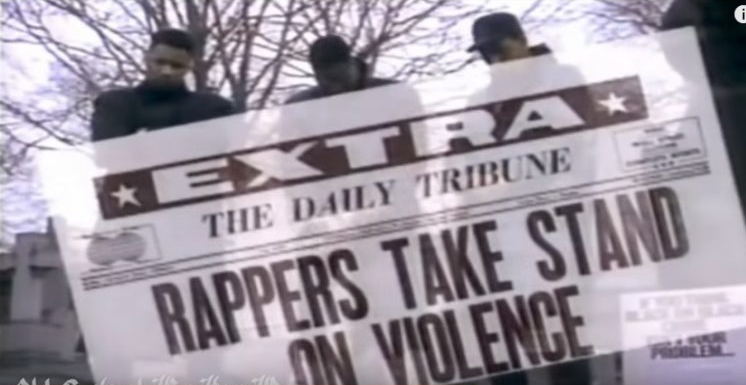
The Social and Political Resonance
Hip Hop turned a megaphone for societal and political commentary. Because it’s conception it has served as a voice for marginalized communities, shedding gentle on problems with inequality, injustice, and systemic oppression.
Addressing Social Points
Hip Hop lyrics typically function a mirrored image of the cruel realities confronted by inner-city youth, addressing themes equivalent to poverty, violence, and racial discrimination.
Artists like Tupac Shakur and N.W.A. used their music to critique societal injustices and advocate for change. Tracks like “Adjustments” by Tupac and “F*** Tha Police” by N.W.A. turned anthems for social activism, sparking conversations about race relations and police brutality.
Empowering Marginalized Voices: Hip Hop has offered a platform for people from marginalized communities to share their tales and views.
Artists from various backgrounds use their music to reclaim narratives and problem stereotypes, empowering listeners to embrace their cultural identities and arise towards systemic oppression. Hip
Hop pioneers like Queen Latifah and Public Enemy promoted messages of self-respect, empowerment, and unity, inspiring generations of listeners to seek out power of their voices.
5 Steps To Turning into A Music Producer
Political Advocacy
Past addressing social points, Hip Hop has performed a major position in political advocacy and activism. Artists like Kendrick Lamar, Widespread, Talib Kweli, Yasin Bey, and Killer Mike have used their platforms to interact with urgent political points.
Their rap music encourages civic participation and raises consciousness about points equivalent to racial inequality, mass incarceration, and financial disparity. Hip Hop’s capability to mobilize and impress communities has made it a potent pressure for social change.
What Age Ought to You Begin Rapping?
Hip Hop’s Environmental Advocacy
Hip Hop’s environmental advocacy represents a robust intersection between cultural expression and social activism, harnessing the style’s affect to lift consciousness about environmental points and encourage collective motion.
From addressing local weather change and air pollution to selling sustainability and conservation, Hip Hop artists have used their platforms to advocate for environmental justice and stewardship.
Addressing Local weather Change
Hip Hop artists have been vocal concerning the pressing want to deal with local weather change, highlighting the disproportionate affect of environmental degradation on marginalized communities.
By their music and activism, artists like Lupe Fiasco and Widespread have referred to as consideration to the devastating results of local weather change, advocating for sustainable options and environmental coverage reform.
Many artists in Hip Hop have positioned a highlight on the inequitable distribution of environmental burdens and assets. From poisonous waste dumps in low-income neighborhoods to the Flint water disaster, Hip Hop artists have amplified the voices of communities affected by environmental injustice, demanding accountability and systemic change.
Sustainability and selling eco-friendly practices and life, are additionally championed throughout the rap tradition. Artists like Jaden Smith and Pharrell Williams have championed sustainability initiatives, advocating for renewable vitality, zero-waste residing, and environmental training.
By their music and philanthropy, they encourage followers to undertake sustainable habits and scale back their ecological footprint.
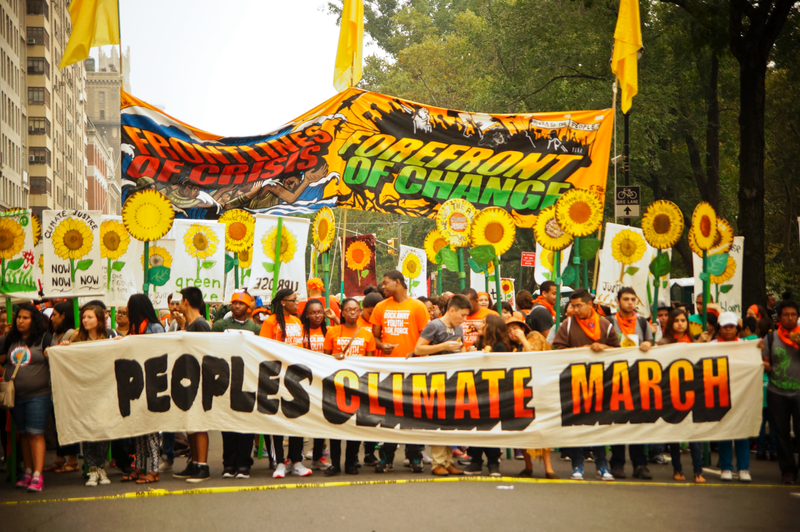
Environmental Schooling and Consciousness: Hip Hop serves as a robust software for environmental training and consciousness, reaching various audiences with messages of environmental stewardship and conservation.
Artists incorporate environmental themes into their lyrics, music movies, and stay performances, sparking conversations about urgent environmental points and provoking motion. Initiatives like Jay-Z’s “Water for Life” marketing campaign and Kendrick Lamar’s partnership with Nationwide Geographic spotlight the significance of environmental training and neighborhood engagement.
Activism and Group Engagement: Hip Hop’s environmental advocacy extends past music to grassroots activism and neighborhood engagement. Artists set up profit live shows, clean-up occasions, and environmental justice initiatives, mobilizing followers and communities to take motion on native and world environmental points.
By their activism, Hip Hop artists display the facility of collective motion and the significance of environmental solidarity.
7 Steps To Turning into A Expert Piano Participant
Hip Hop’s Cultural Affect
Hip Hop’s cultural affect extends past music, permeating trend, language, and well-liked tradition. The style’s distinctive aesthetic and language have been embraced by mainstream society, shaping tendencies in trend, slang, and promoting.
From avenue put on manufacturers to viral dance challenges, Hip Hop tradition has change into synonymous with youth tradition and concrete cool, influencing every part from trend runways to company boardrooms.
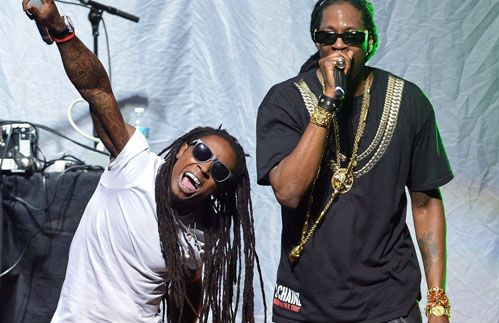
Hip Hop’s attain has prolonged far past its Bronx origins, changing into a worldwide phenomenon with a various and multicultural following.
Artists from around the globe have embraced the style, infusing it with their distinctive cultural views and experiences. Hip Hop’s common themes of resilience, wrestle, and triumph resonate with audiences worldwide, transcending linguistic and cultural obstacles to create a worldwide neighborhood united by a shared love for the music and tradition.
In essence, the social and political resonance of Hip Hop underscores its significance as greater than only a style of music—it’s a highly effective software for social change, cultural empowerment, and political activism.
As Hip Hop continues to evolve and adapt to altering occasions, its capability to encourage, educate, and mobilize communities stays as potent as ever, guaranteeing its enduring legacy as a pressure for optimistic change everywhere in the world.
Feminine Rapper With The Most Grammys
Hip Hop as a Instrument for Self-Expression
Hip Hop serves as a potent software for self-expression, offering a platform for people to articulate their experiences, views, and feelings in a uncooked and genuine method.
Listed below are methods rappers use hip hop to precise themselves:
- Story telling
- Graffiti
- Hip Hop Dancing
- Utilizing avenue/hip hop vernacular
- Carrying city clothes
- Cultural Identification and Authenticity
We are going to cowl all areas which are listed all through this text, however let’s begin with Mcing and story telling. On the coronary heart of Hip Hop’s self-expression lies the artwork of MCing, or rapping. MCs use their lyrics to relate private tales, share social commentary, and discover complicated feelings.
Whether or not recounting tales of resilience within the face of adversity or expressing vulnerability and introspection, rappers use their verses as a canvas to color vivid portraits of their lived experiences.
Artists like Tupac Shakur and Nas are famend for his or her poignant storytelling, utilizing their music to confront problems with poverty, violence, and systemic injustice.
This Is How Rappers Make Music In Jail
Cultural Identification and Authenticity
Hip Hop celebrates authenticity and individuality, encouraging artists to embrace their cultural heritage and specific themselves unapologetically.
Many artists draw inspiration from their cultural backgrounds, infusing their music with components of their ethnic heritage, language, and traditions.
This celebration of cultural identification is clear within the music of artists like J Balvin, who incorporates components of reggaeton and Latin rhythms into his music, and Stormzy, whose lyrics replicate his experiences as a Black British artist navigating problems with race and identification.
There are different rappers like Kodak Black who proudly raps about his Haitian heritage, or Kevin Gates who typically websites in his music that he’s a proud Muslim. Hip Hop permits you to be pleased with your cultural background and encourages you to share it with the world.
To respect and uphold your heritage in a optimistic means and share it with the world, that is the cultural significance of hip hop.
Rappers With Constructive Songs
Empowerment and Liberation
For a lot of artists and followers alike, Hip Hop represents a type of empowerment and liberation—a method of reclaiming company and asserting one’s voice in a world that usually seeks to silence marginalized communities.
By music, dance, and visible artwork, people discover solace, power, and a way of belonging throughout the Hip Hop neighborhood. This empowerment is clear within the music of artists like Cardi B and Lizzo, who use their platforms to advertise self-confidence, physique positivity, and feminine empowerment.
Connection and Group
Hip Hop fosters a way of connection and neighborhood, bringing collectively people from various backgrounds and uniting them by way of a shared love for the tradition.
Whether or not by way of collaborative initiatives, cyphers, or stay performances, Hip Hop creates areas for artists and followers to attach, collaborate, and help each other.
This sense of neighborhood is central to Hip Hop’s ethos, transcending geographic boundaries and fostering a worldwide community of artists and fanatics united by a standard ardour for the tradition.
In conclusion, Hip Hop serves as a robust automobile for self-expression, permitting people to claim their identities, share their tales, and join with others in significant methods.
By music, dance, and visible artwork, Hip Hop empowers people to embrace their truths, have fun their cultural heritage, and contribute to a vibrant and inclusive neighborhood united by a shared love for the tradition.
Why Do Rappers Have Face Tattoos?
The Language of Hip Hop
The language of Hip Hop is a dynamic and multifaceted side of the tradition, characterised by its creativity and innovation.
Rooted within the vernacular of black communities, Hip Hop language encompasses a various vary of types, dialects, and expressions, reflecting the lived experiences and cultural influences of its creators.
Hip Hop is famend for its use of slang and vernacular, with artists typically incorporating native dialects and expressions into their lyrics.
From the streets of New York Metropolis to the neighborhoods of Los Angeles and past, Hip Hop language displays the linguistic range of city communities. Artists like Snoop Dogg, E-40, and Jay-Z are identified for his or her distinctive use of slang, introducing new phrases and phrases that rapidly change into a part of the cultural lexicon.
On the coronary heart of Hip Hop language lies a love for wordplay, metaphor, and double entendre. MCs use intelligent rhymes, similes, and metaphors to convey complicated concepts and evoke vivid imagery.
From the intricate lyricism of Fabolous to the playful wit of Kendrick Lamar, wordplay is a cornerstone of Hip Hop lyricism, inviting listeners to decipher layers of that means and admire the artistry behind the rhymes.
Which Rappers Do not Write Their Songs?
Hip Hop language is consistently evolving, adapting to new cultural influences, and embracing rising tendencies. Artists push the boundaries of language, experimenting with new sounds, types, and linguistic strategies.
From the rapid-fire supply of Busta Rhymes to the melodic cadences of Drake, Hip Hop language continues to evolve, reflecting the ever-changing panorama of city tradition.
In essence, the language of Hip Hop is wealthy and vibrant, reflecting the creativity, range, and resilience of city communities around the globe.
From its roots within the streets of the Bronx to its world attain at the moment, Hip Hop language continues to form the cultural zeitgeist, serving as a robust medium for self-expression, storytelling, and cultural trade.
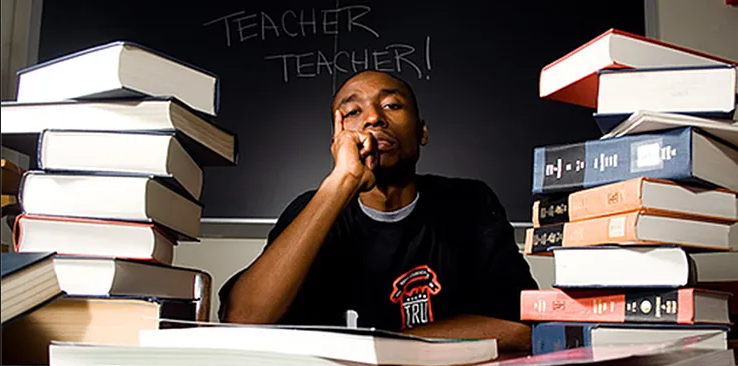
Hip Hop’s Instructional Influence
Hip Hop’s academic affect extends far past its position as a type of leisure, serving as a robust software for studying, empowerment, and social change.
By its lyrical storytelling, cultural commentary, and neighborhood engagement, Hip Hop has reworked training. Hip hop has impressed college students and educators alike to discover various subjects, problem typical pondering, and embrace creativity within the pursuit of data.
The Hip Hop tradition gives a lens by way of which college students can discover various cultures, histories, and views. From the roots of the style in African and African American traditions to its world affect on music, artwork, and trend, it fosters cultural consciousness and appreciation amongst college students of all backgrounds.
By learning Hip Hop, college students achieve insights into social points, identification, and illustration – empowering them to interact critically with the world round them.
Why Most Rap Music Sound The Identical
Hip Hop is a superb software for studying as a result of it encourages crucial pondering and evaluation, difficult college students to deconstruct complicated themes and narratives embedded inside its lyrics and imagery.
By analyzing the social, political, and financial contexts of Hip Hop tradition, college students develop crucial pondering abilities and be taught to interrogate energy constructions, problem stereotypes, and advocate for social justice.
Hip Hop’s emphasis on creativity and self-expression encourages college students to suppose exterior the field and embrace modern approaches to problem-solving.
Empowering Marginalized Voices
Hip Hop amplifies the voices of marginalized communities, offering a platform for college kids to discover problems with race, class, gender, and identification.
By learning Hip Hop artists who converse reality to energy and problem dominant narratives, college students from marginalized backgrounds discover validation, empowerment, and a way of belonging. Hip Hop’s emphasis on authenticity and self-expression encourages college students to share their very own tales and views, fostering exclusivity and variety within the classroom.
Selling Social and Emotional Studying
Hip Hop promotes social and emotional studying by addressing themes of resilience, empathy, and private development.
By its lyrics and imagery, Hip Hop artists share their struggles, triumphs, and reflections on life, inspiring college students to navigate their very own challenges with braveness and resilience.
Hip Hop offers an area for college kids to discover feelings and develop social abilities by way of collaborative initiatives, peer suggestions, and neighborhood engagement.
Why Is There So A lot Cursing In Rap?
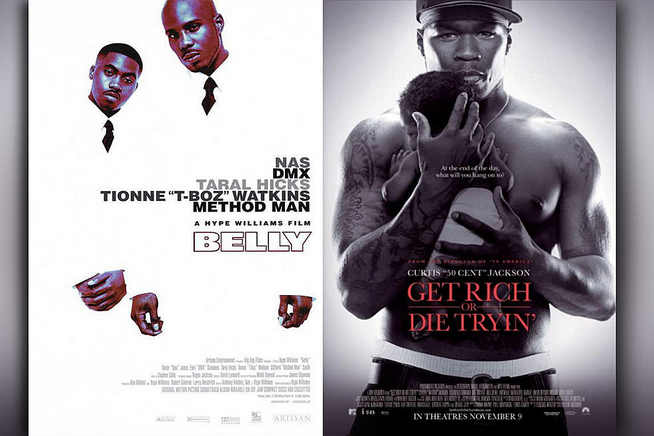
The Affect of Hip Hop Cinema
The affect of Hip Hop cinema extends past leisure, shaping narratives, difficult stereotypes, and amplifying the voices of underrepresented communities.
Since its emergence within the late Eighties, Hip Hop cinema has developed into a robust pressure in well-liked tradition, reflecting the range, creativity, and resilience of the Hip Hop motion.
Hip Hop cinema has offered a platform for Black, Latinx, and different marginalized communities to inform their tales and reclaim their narratives.
Movies like “Boyz n the Hood,” “Do the Proper Factor,” and “Straight Outta Compton” discover themes of identification, neighborhood, and social justice, giving voice to the experiences of city youth and highlighting the systemic injustices they face.
By centering the views of individuals of coloration, Hip Hop cinema challenges mainstream narratives and promotes larger illustration and visibility on display.
Hip Hop cinema is well known for its authenticity and cultural resonance, capturing the vibrancy and complexity of city life with honesty and integrity.
Filmmakers like Spike Lee, John Singleton, and Ava DuVernay infuse their work with Hip Hop aesthetics, language, and music, creating movies that resonate with audiences on a visceral stage. Hip Hop cinema celebrates the wonder and variety of city tradition, offering a mirror by way of which audiences can see themselves mirrored on display.
Can You Begin A Rap Profession In Your 30s?
Hip Hop cinema serves as a automobile for social commentary and critique, addressing urgent points equivalent to racism, police brutality, financial inequality, and mass incarceration.
Movies like “Fruitvale Station,” “Selma,” and “Blindspotting” confront systemic injustices and problem viewers to confront uncomfortable truths concerning the society by which we stay. Hip Hop cinema has the facility to impress thought, spark dialog, and encourage motion, making it a potent software for social change.
Hip Hop cinema’s affect extends far past the borders of america, resonating with audiences around the globe and provoking a worldwide motion of artists and filmmakers.
From France to South Africa, Brazil to South Korea, Hip Hop cinema has sparked a wave of creativity and innovation, influencing filmmakers to discover themes of identification, empowerment, and resistance in their very own cultural contexts.
Music Streaming: The Way forward for The Music Trade
High 12 Greatest Hip Hop Motion pictures
- Juice
- Poetic Justice
- Stomach
- Paid In Full
- Straight Outta Compton
- Friday
- Atlanta
- Get Wealthy or Die Tryin’
- Infamous
- Roxanne, Roxanne
- Brown Sugar
- Home Occasion
FAQ’s About Hip Hop Tradition
Is Hip Hop Tradition Restricted to america?
Opposite to well-liked perception, Hip Hop transcends borders, resonating globally. Its affect is felt in various cultures worldwide.
What Does Hip Hop Stand For?
- Self-expression: Hip Hop offers a platform for people to precise themselves authentically by way of music, dance, artwork, and language.
- Social Justice: Hip Hop confronts problems with inequality, racism, and systemic injustice, advocating for social change and empowerment.
- Cultural Identification: Hip Hop celebrates cultural heritage and identification, selling pleasure and solidarity amongst various communities.
- Creativity and Innovation: Hip Hop encourages creativity, innovation, and self-exploration, pushing boundaries and difficult conventions.
- Group and Connection: Hip Hop fosters a way of neighborhood and connection, bringing folks collectively by way of shared experiences and mutual respect.
- Resilience and Empowerment: Hip Hop embodies resilience and empowerment, empowering people to beat adversity and attempt for greatness.
- Authenticity: Hip Hop values authenticity and honesty, rejecting superficiality and embracing individuality and originality.
- World Affect: Hip Hop has a worldwide affect, transcending borders and languages to unite folks around the globe in a shared cultural expertise.
- Legacy and Custom: Hip Hop honors its roots and traditions whereas embracing evolution and alter, passing down information and inspiration to future generations.
- Hope and Optimism: Hip Hop conjures up hope and optimism, providing a voice to the unvoiced and a imaginative and prescient of a greater future by way of creativity and resilience.
Who Are The Quickest Rappers In Hip Hop?
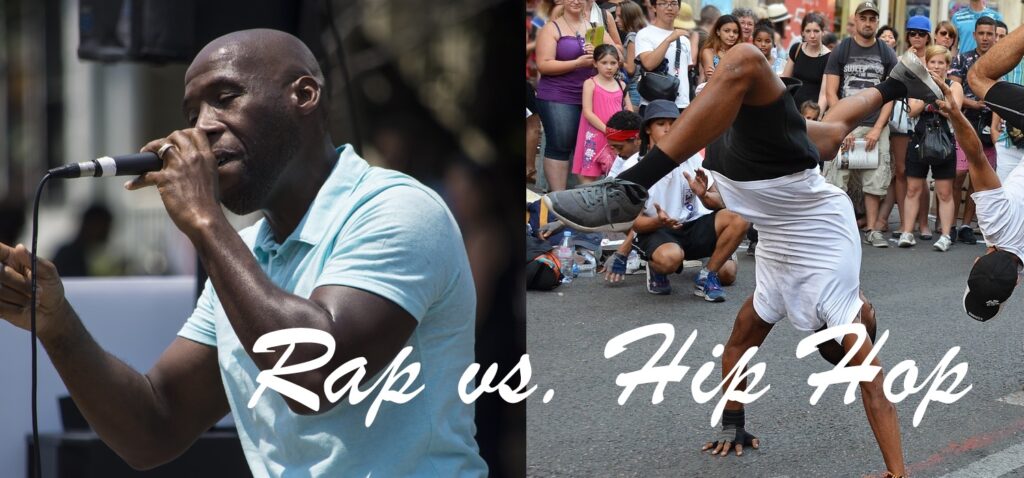
What Is The Distinction Between Hip Hop and Rap?
The phrases “Hip Hop” and “Rap” are sometimes used interchangeably, however they really consult with completely different components throughout the broader tradition.
This is a breakdown of the important thing variations:
Hip Hop – Hip Hop is one thing you reside. It is the tradition celebrating the 4 Parts, which was talked about earlier – Djing, MCing, Breakdancing, and Graffiti Artwork.
Hip Hop values embrace self-expression, authenticity, creativity, social justice, and neighborhood empowerment. It serves as a platform for marginalized voices and a method of advocating for social change.
Rap – Rap is one thing you do. It is Mcing, and is the music that represents hip hop. Rap is a music style that has many sub-genres inside it. These sub-genres embrace lure, acutely aware, membership, gangster, emo, backpack rap, drill, underground, increase bap, pop, and soul rap.
Rap music permits artists to precise themselves creatively by way of their lyrics, supply, and efficiency. It serves as a platform for artists to share their tales, convey messages, and join with audiences on a private stage.
What Does The Phrase Cypher Imply In Hip Hop?
Individuals take turns improvising rhymes and lyrics over a beat or instrumental monitor, showcasing their lyrical prowess, circulate, and creativity.
Along with rapping, some cyphers could embrace people who focus on beatboxing, utilizing their vocal percussion abilities to create rhythms and sounds with their mouths.
Cyphers are characterised by a spirit of collaboration and competitors, with artists rapping and feeding off one another’s vitality and responding in real-time to the performances of others within the circle.
The efficiency sometimes contain steady, uninterrupted performances, with every participant seamlessly transitioning between verses or beats with out breaks or pauses.
Whereas cyphers may be aggressive, they’re additionally seen as alternatives for artists to help and uplift one another, sharing constructive suggestions and encouragement.
[ad_2]